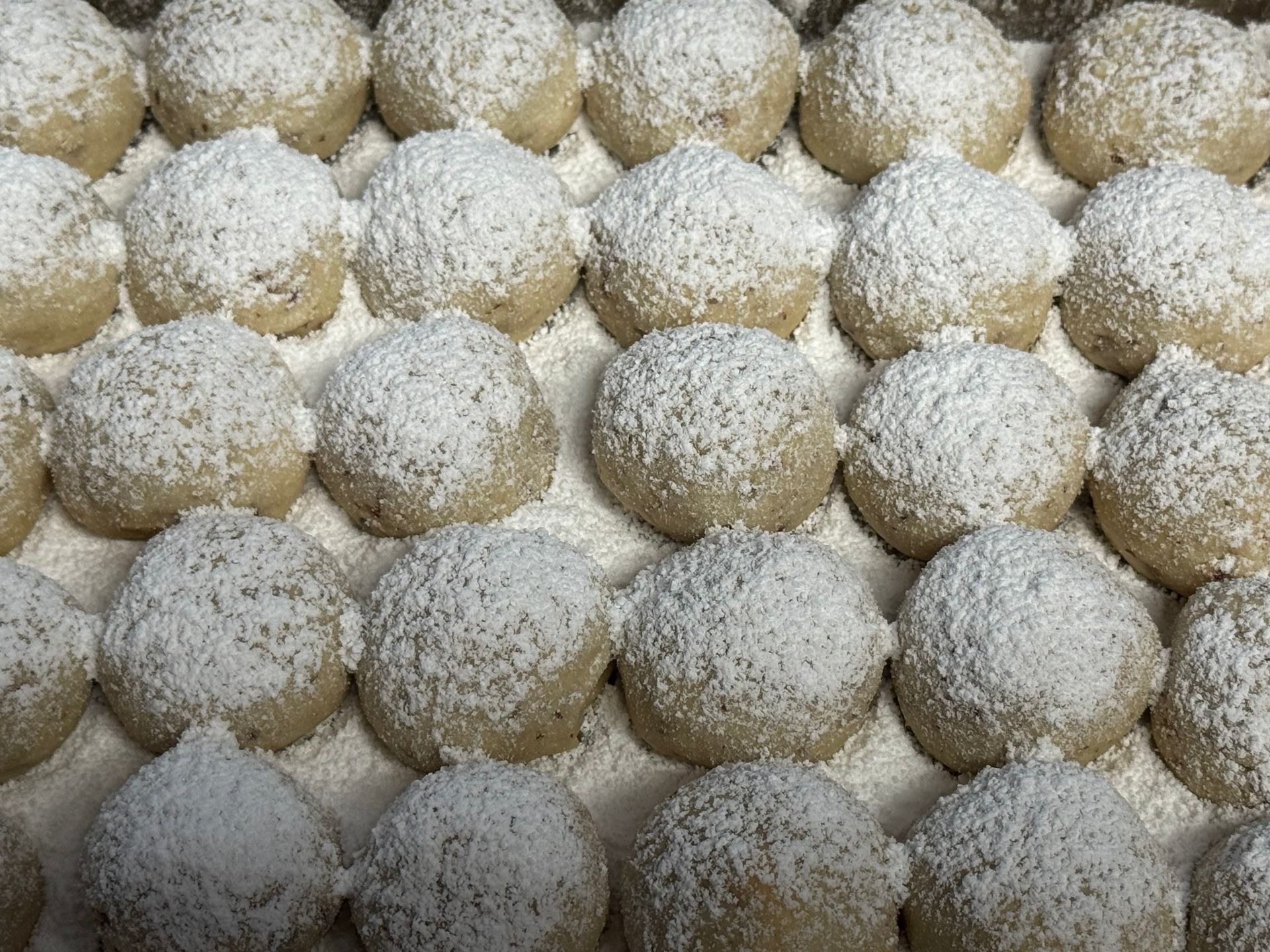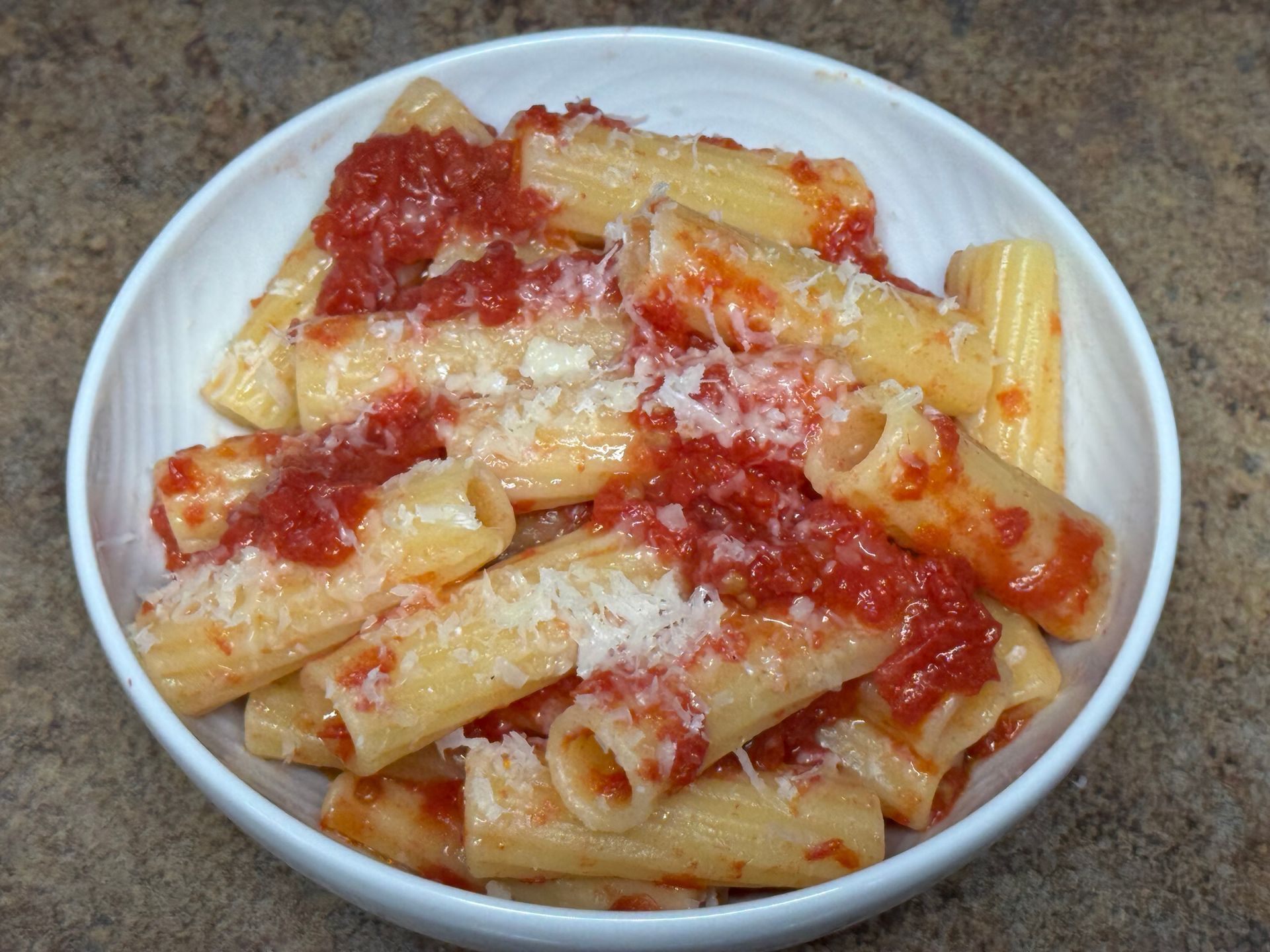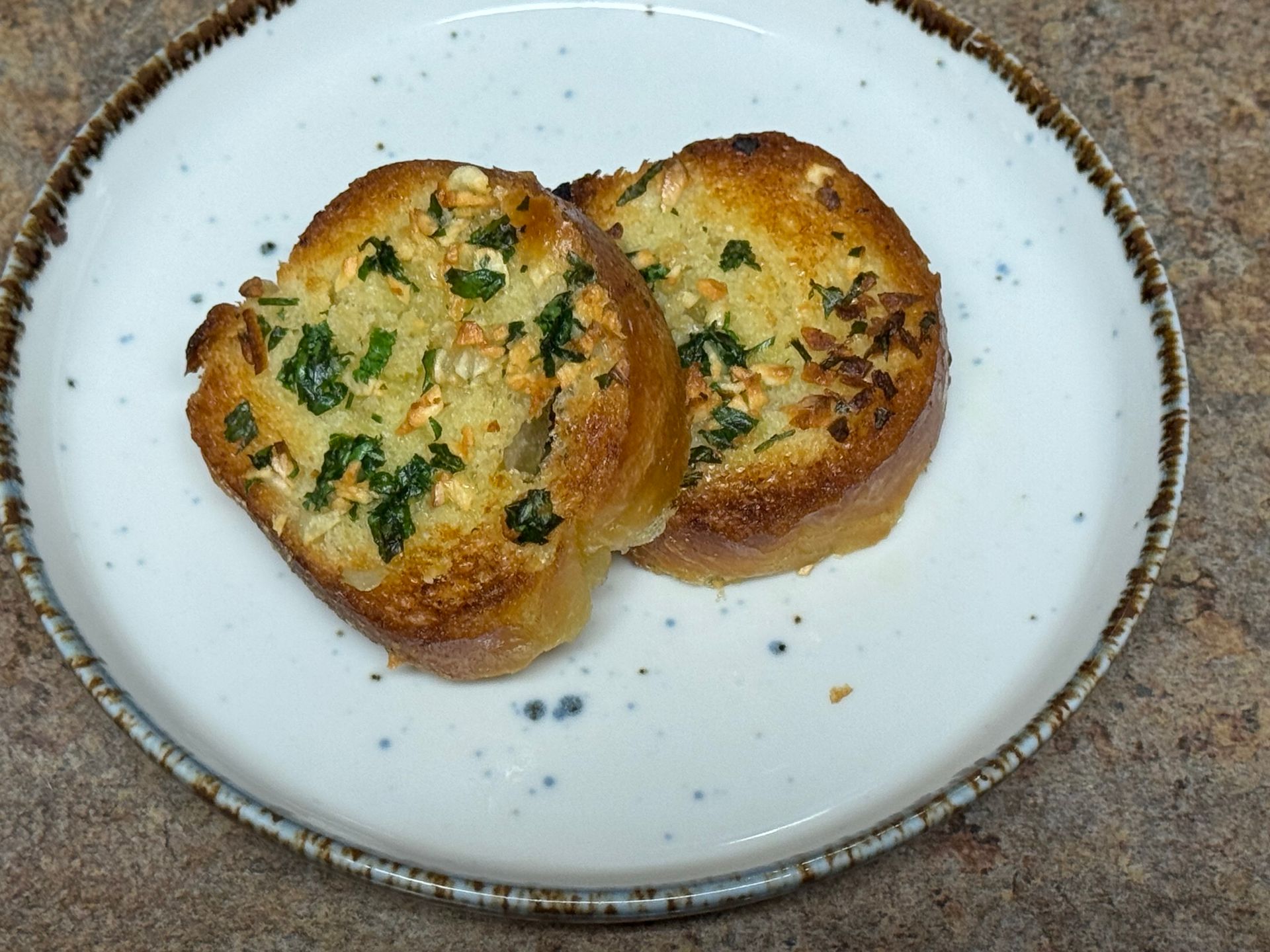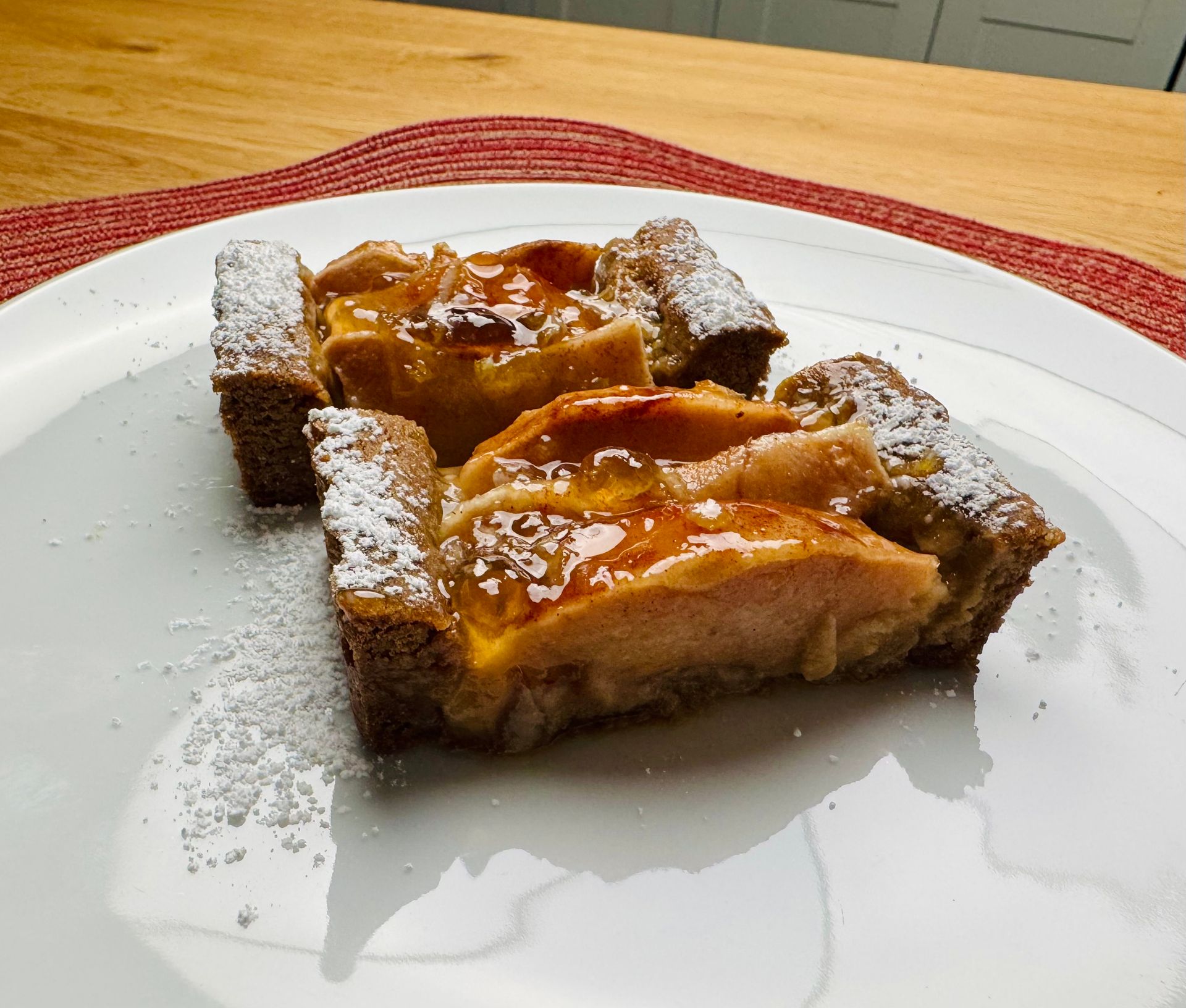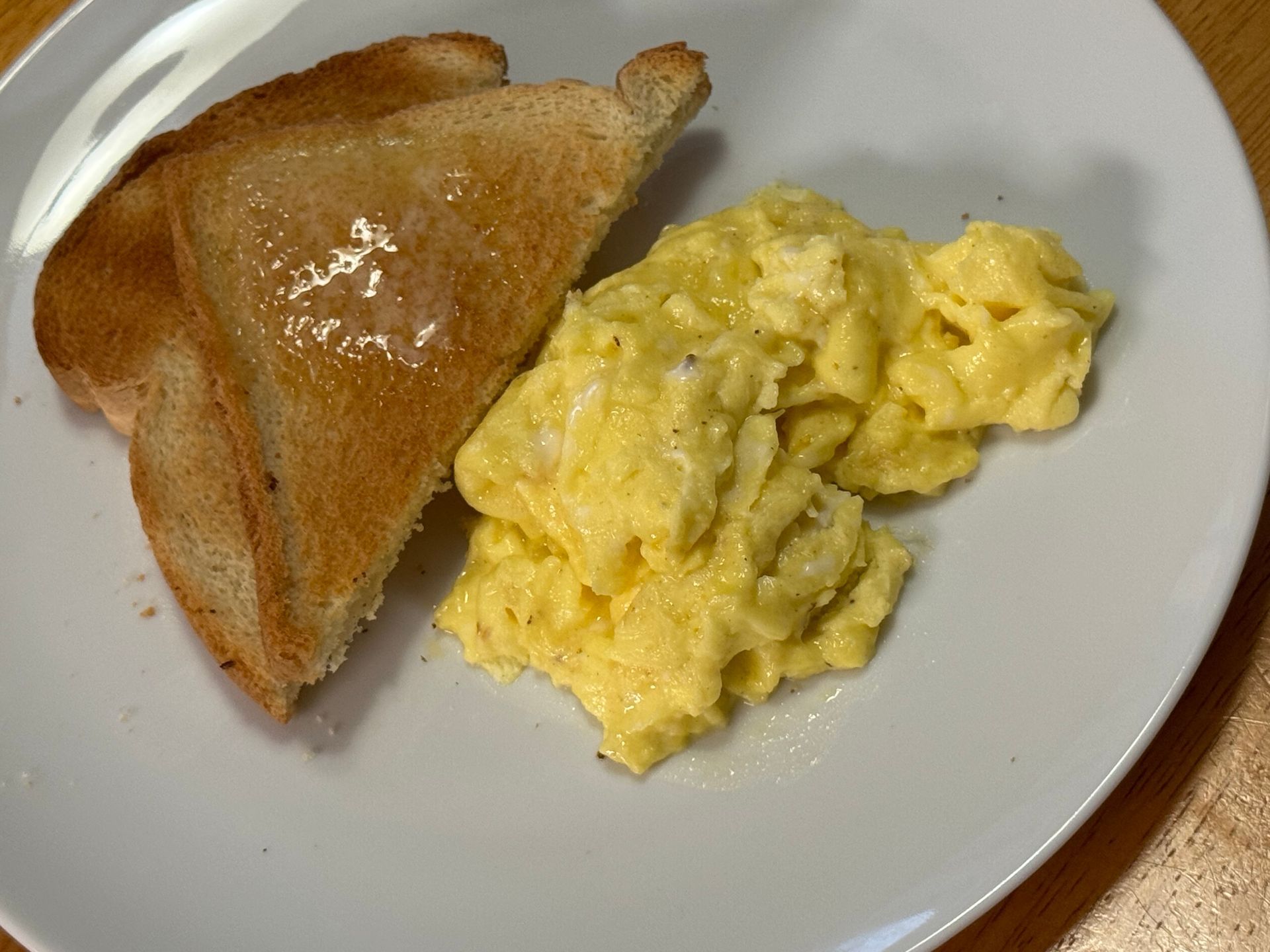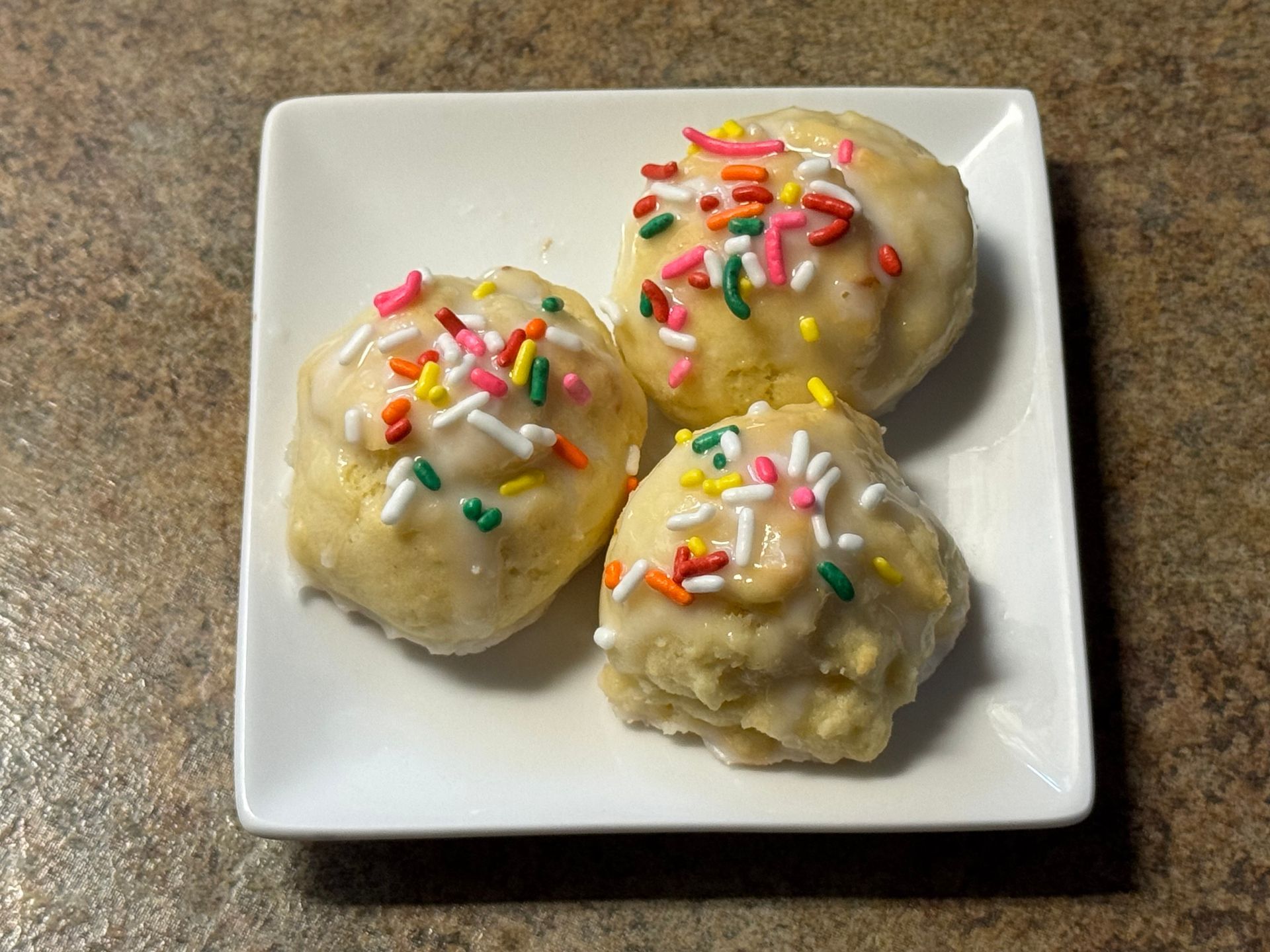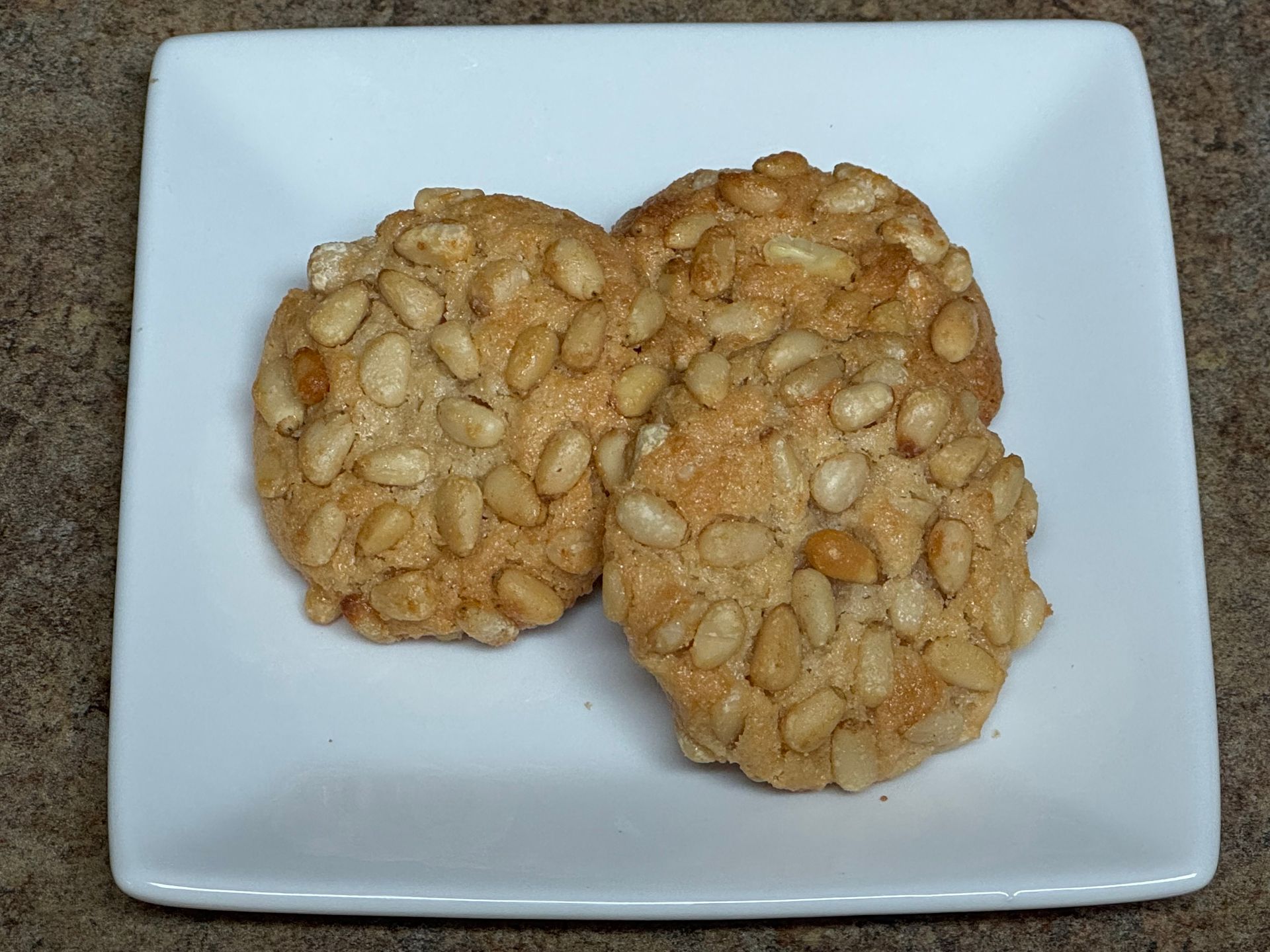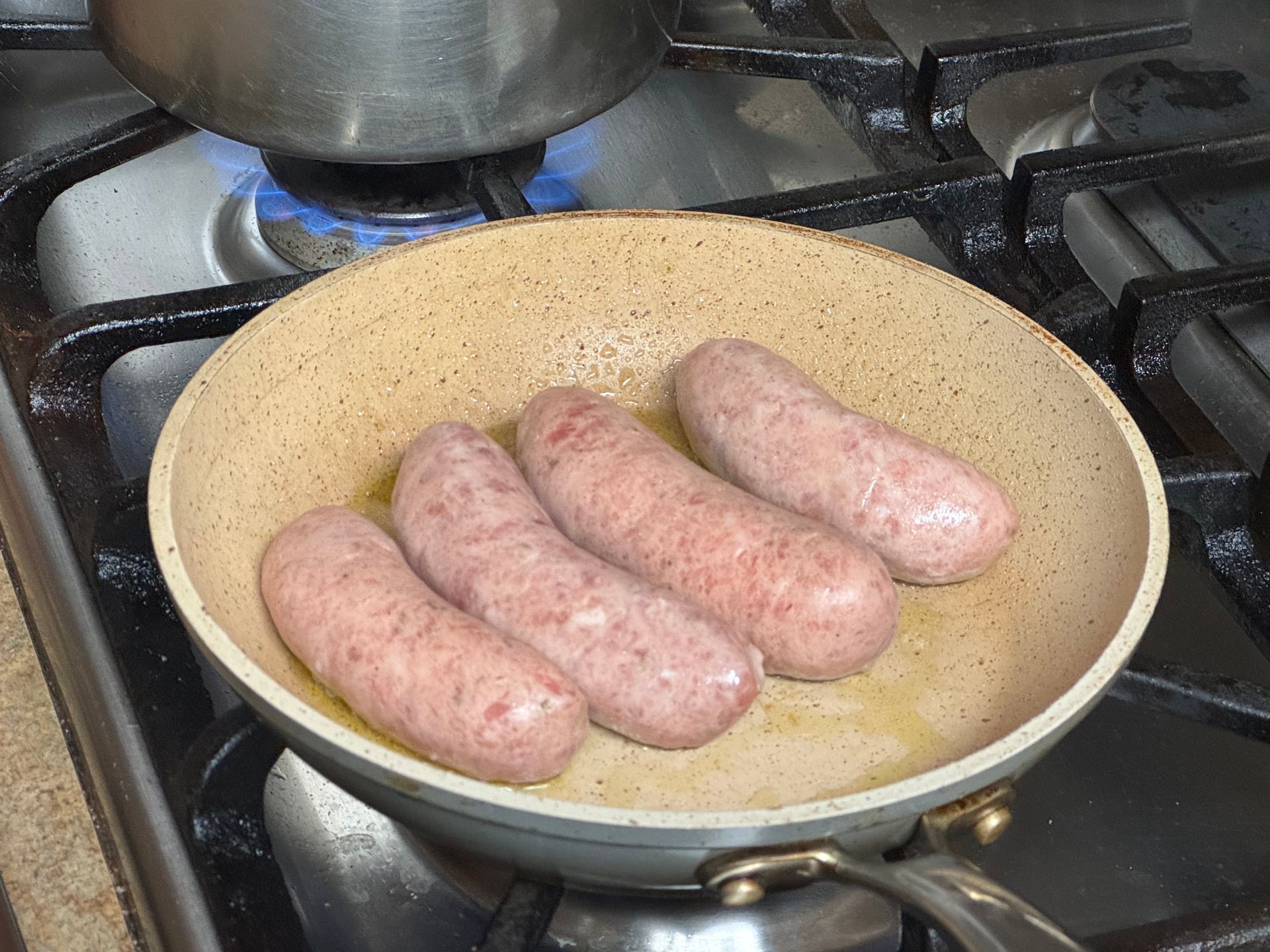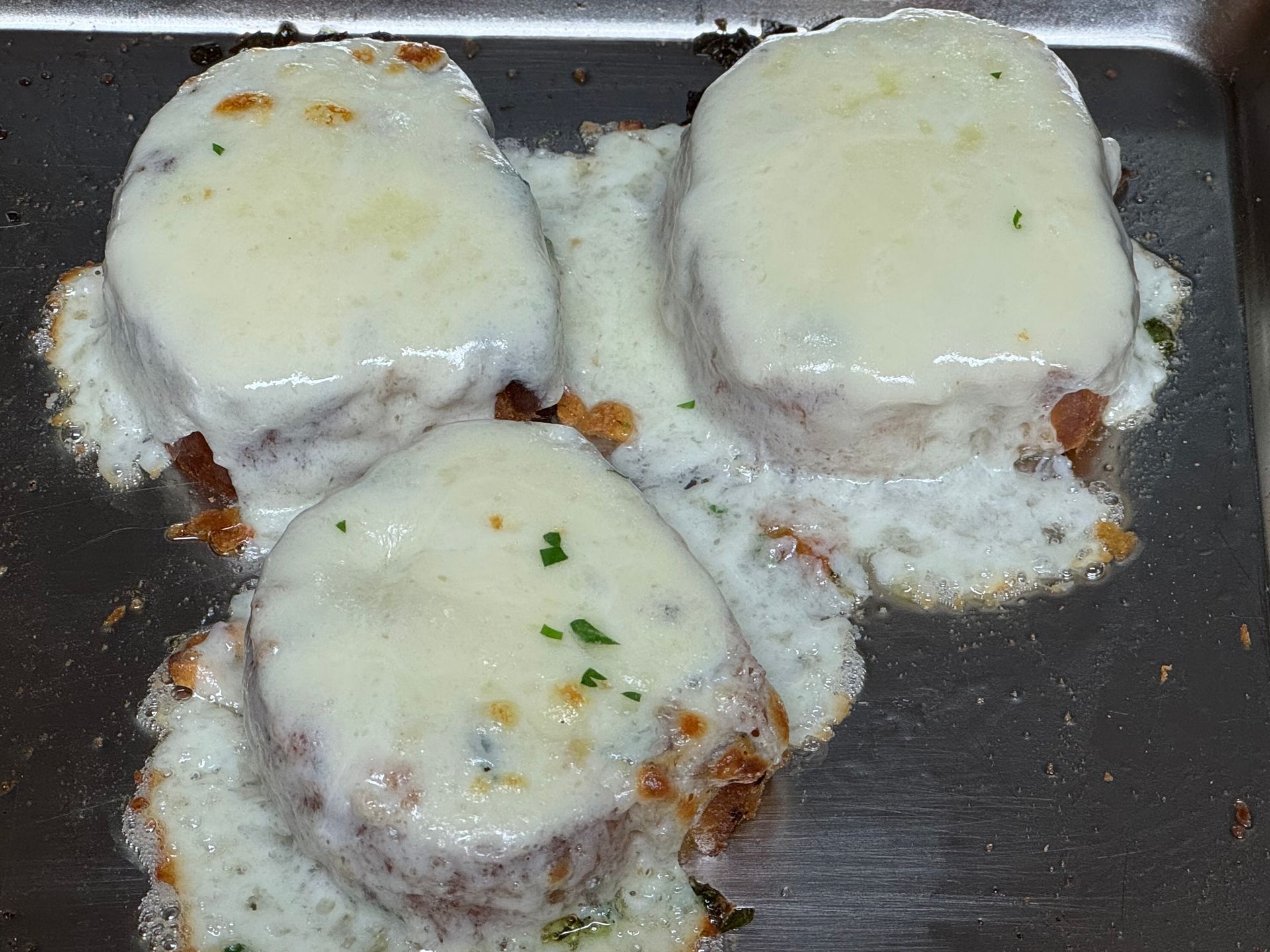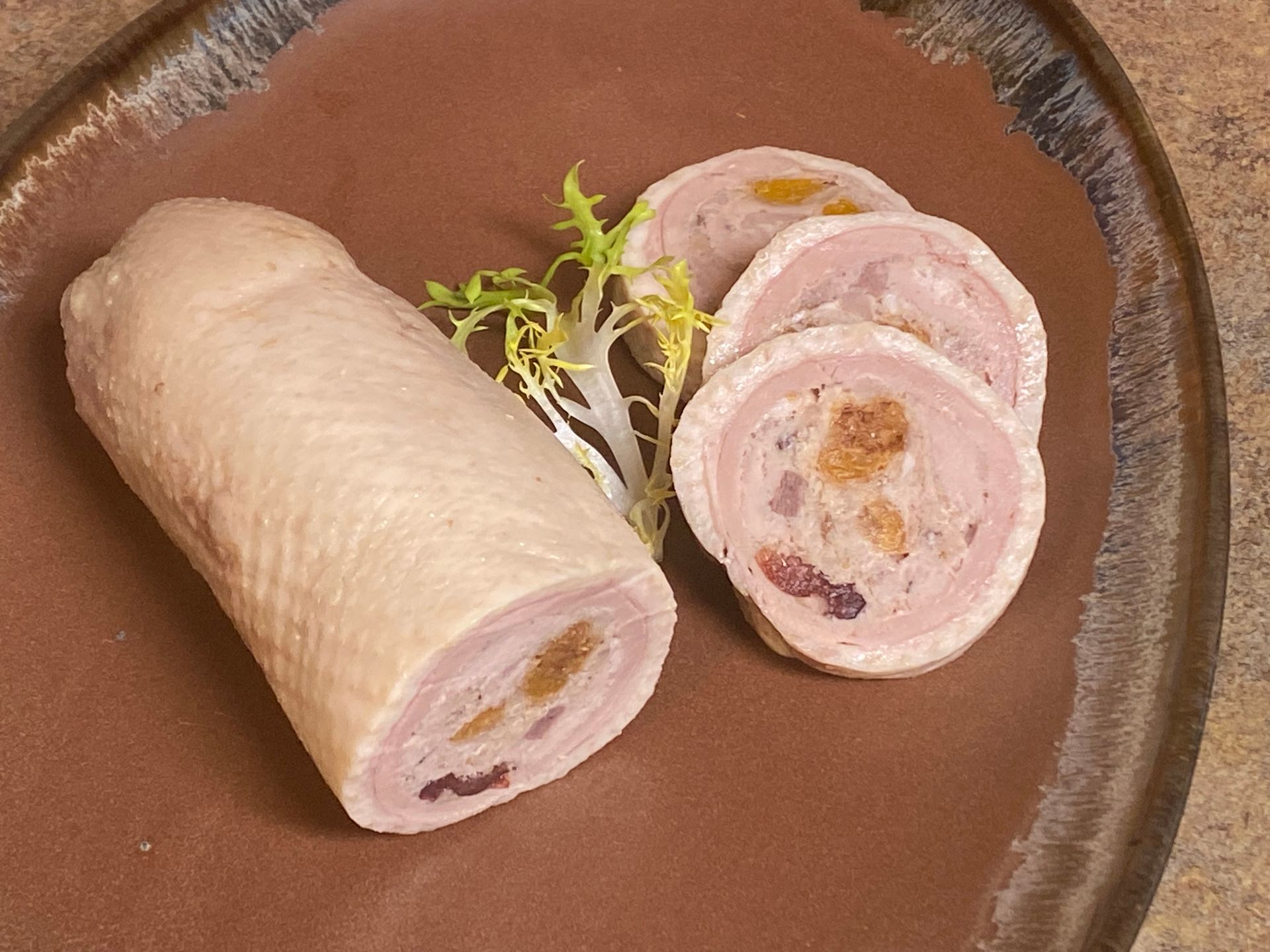

Galantine of Chicken
Winter time is perfect for practicing (and eating) terrines, pates, galantines, etc…
The photo (top left) is prepared by pounding the breast and wrapping it around the forcemeat.
The photo underneath is a galantine with a whole breast.
(the chicken galantine style in this recipe)
Note: always poach off a sample of the forcemeat and evaluate for flavor and texture before assembling!
Prep Time: 3 hours
Cooking Time: 3 hours
Ingredients
Yield: 10 portions
1 ea Fresh Chicken (3 lb with gizzards)
8 oz Chicken leg & thigh meat, cleaned & diced from the whole chicken
1/2 oz Butter
2 each Shallots, sliced
2 clove Bread, small cubes
6 oz Heavy cream
1 Tbsp Chicken glace, made by reducing the chicken stock
1 Tbsp Salt
1 tsp Black pepper
1 each Egg yolk
2 each Egg whites
Garnish:
3 oz Wild Mushrooms, sautéed and cooled
1 oz Truffle peelings
1 Tbsp Herbs, chopped (parsely, chives, tarragon)
3 oz Pistachio Nuts, blanched & peeled; chopped
liver, heart and stomach may be poached, cooled and diced-added to garnish
How to prepare the Chicken Galantine
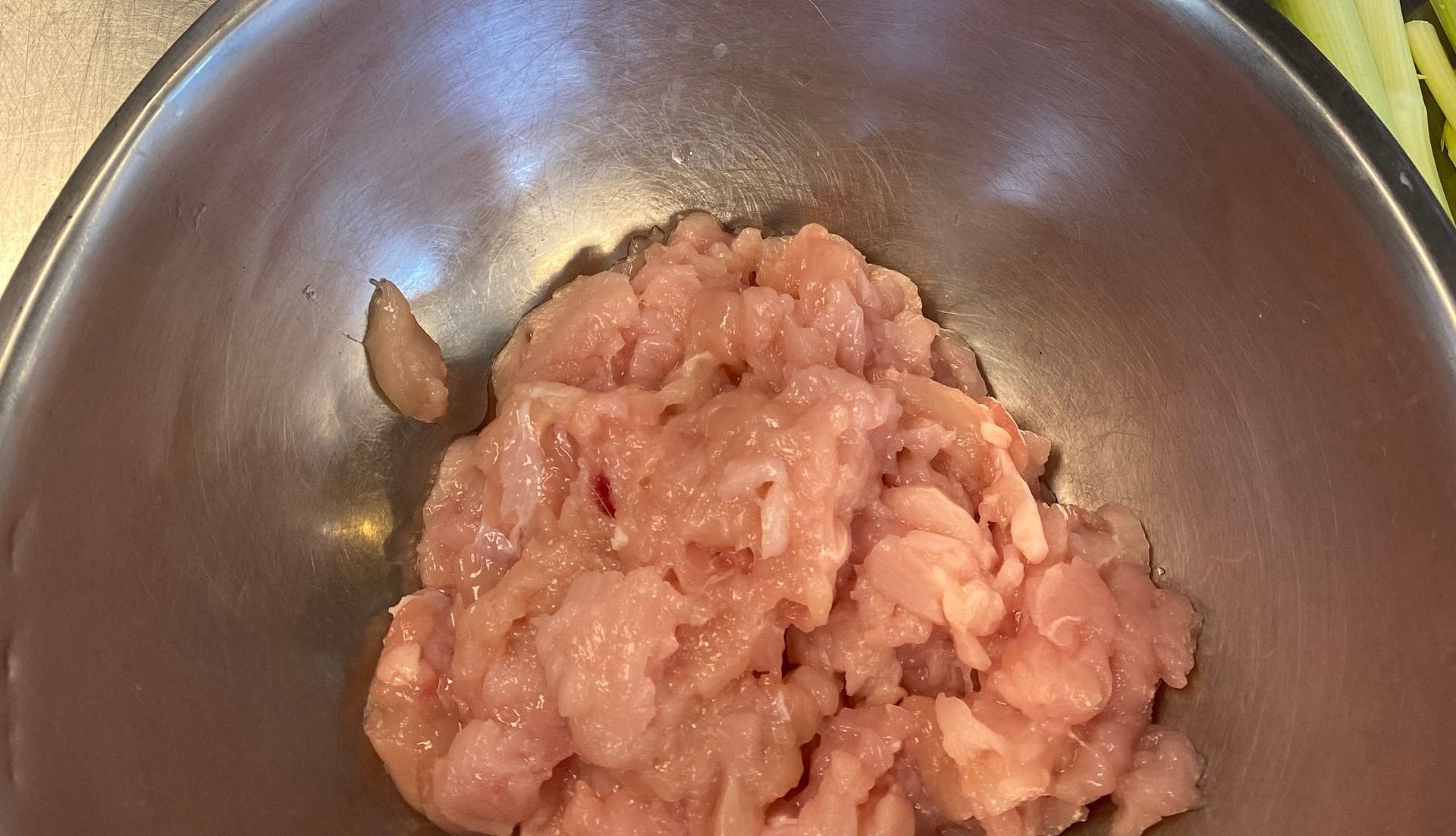
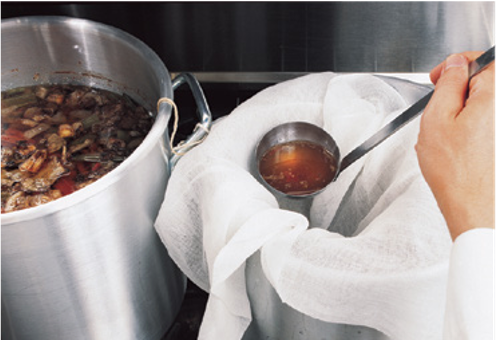
Step 1 Fabricating the Chicken
Carefully cut a slice down the back of the chicken, using a paring knife and/or fingers, peel the skin off of the chicken on both sides until you reach the wings and legs. Cut the tip of the wing and the tip of the leg off-reserve for stock. Pull the skin over the wings and over the thigh/leg carefully to avoid tearing the skin. Continue over the breast until the entire skin is removed. Place onto a tray over plastic wrap, refrigerate.
Carve off the breasts, take off the tender and reserve for the forcemeat, shape the breasts to about 3 inches wide, save trim for forcemeat.
Season & marinate for several hours in the refrigerator. Fabricate the remaining meat from the carcass, carefully cut out tendons. Place into a bowl with the tenders, season with spices.
Place the cut up carcass into 2 qts chicken stock and simmer for 3 hours, being careful to skim fat and impurities. Strain and reduce to 1/2 cup glace.
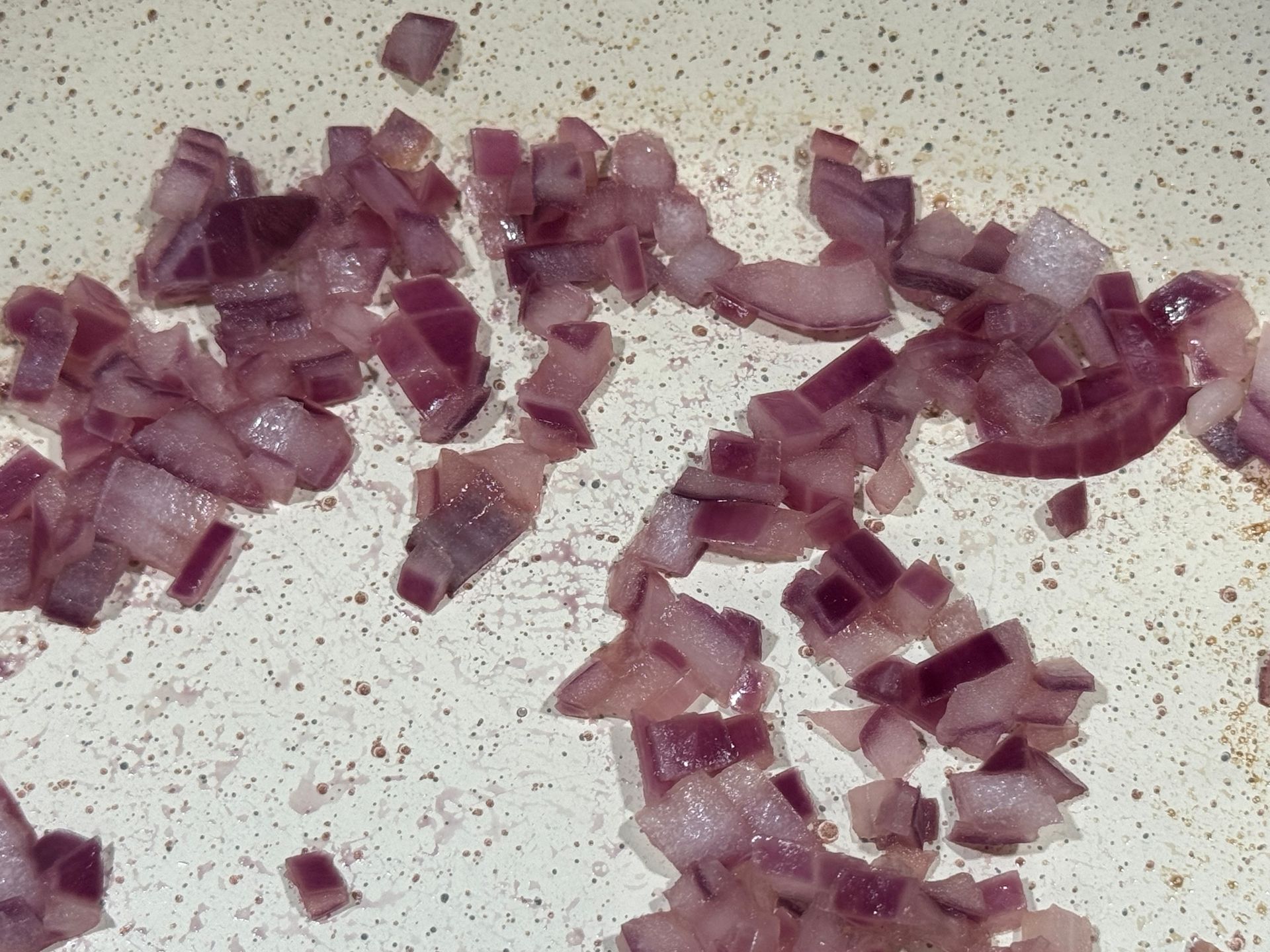
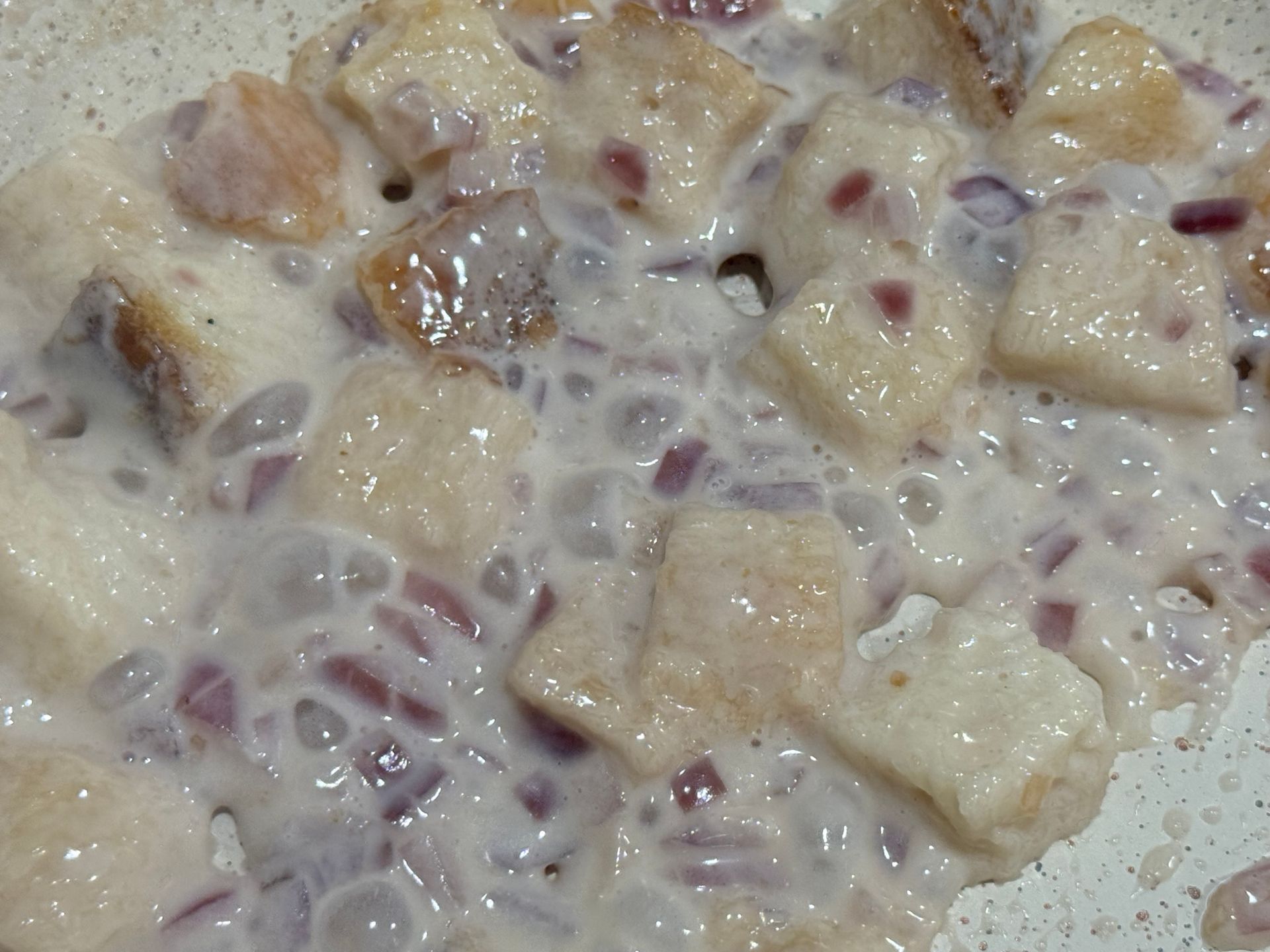
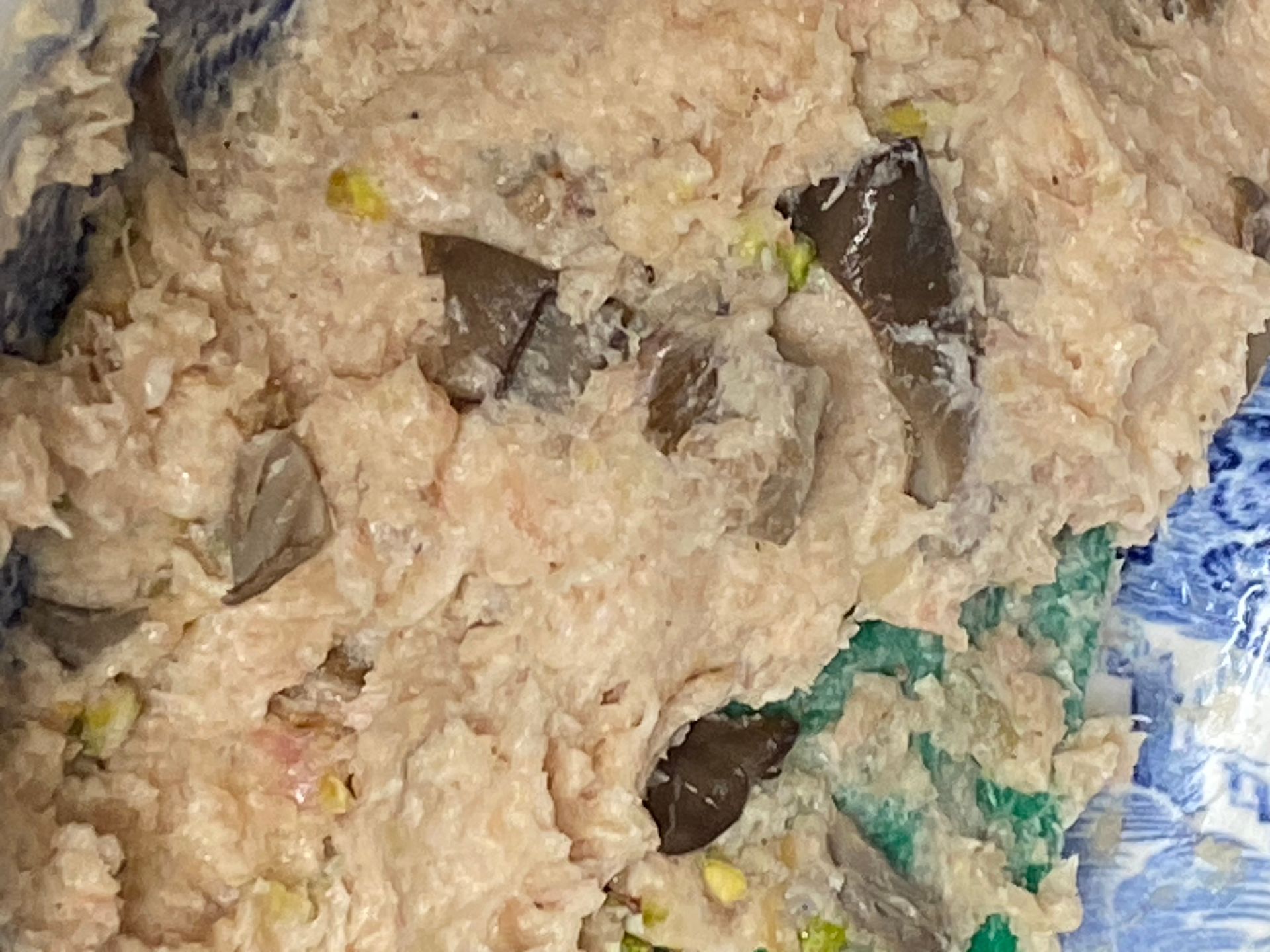
Step 2 Preparing the forcemeat
Sweat shallots in butter, add diced bread and cream, reduce, stirring with a wooden spoon to create a 'roux'/ panada; cool.
You can season the panada and also add fresh herbs. I usually do this when I made a seafood mousseline forcemeat with a panada.
Add cooled panada to the diced meats. Add seasonings, grind the marinated meat into a cold bowl over ice, add the egg yolk and egg white slowly, stirring with a rubber spatula to incorporate, add the chicken glace and a few ounces of cream if needed and poach a sample; adjust seasoning.
Fold in the garnish.
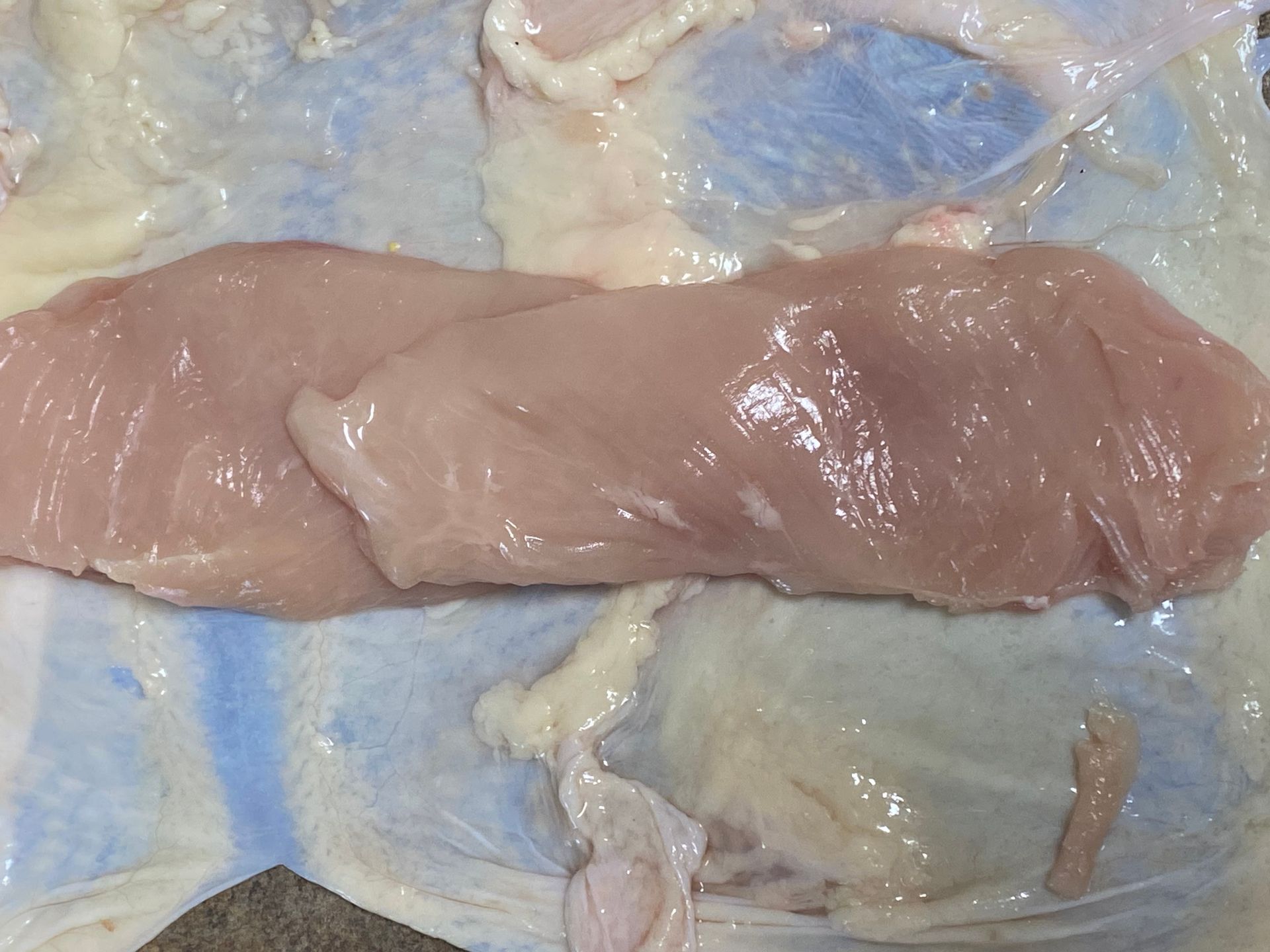
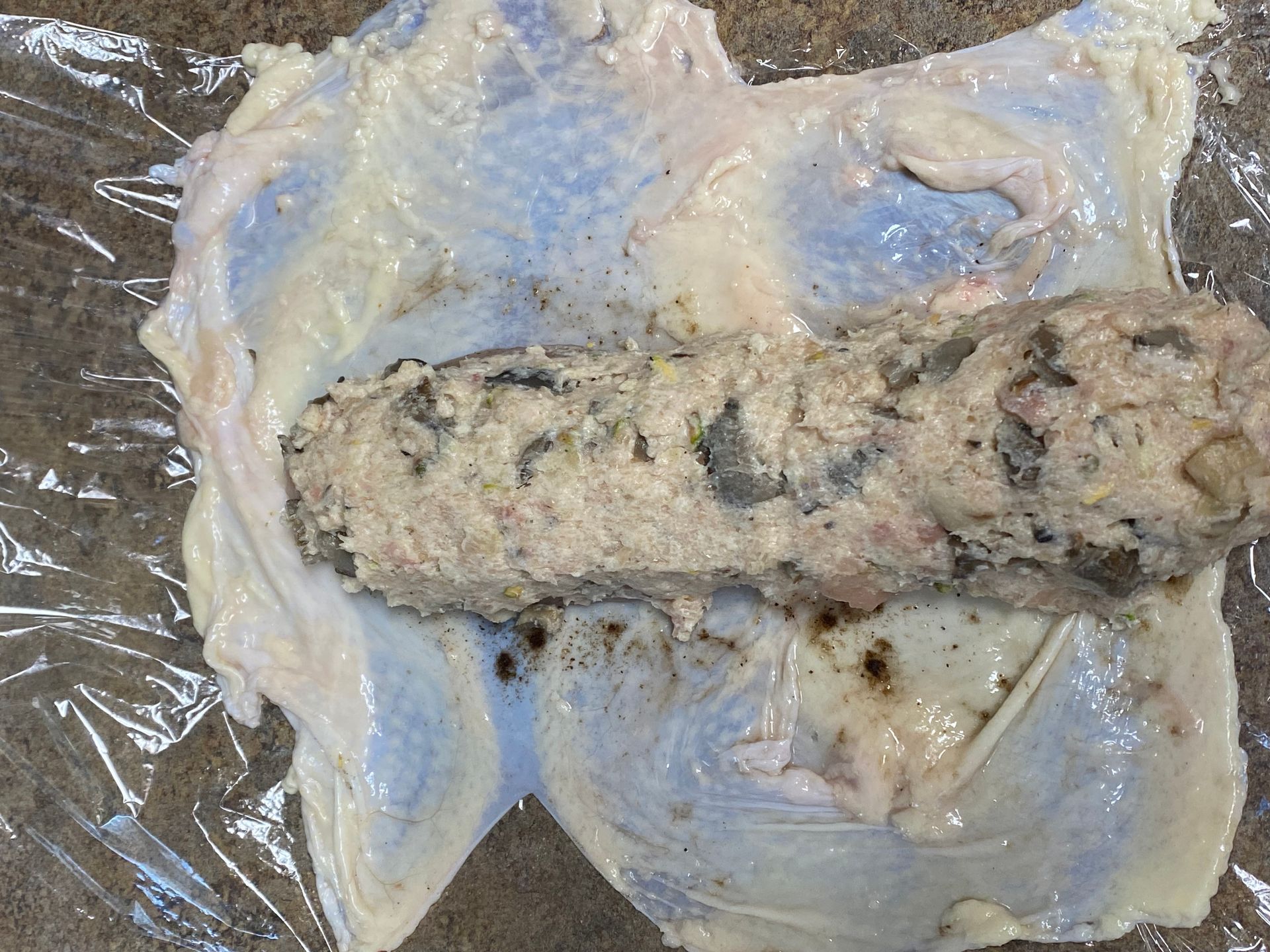
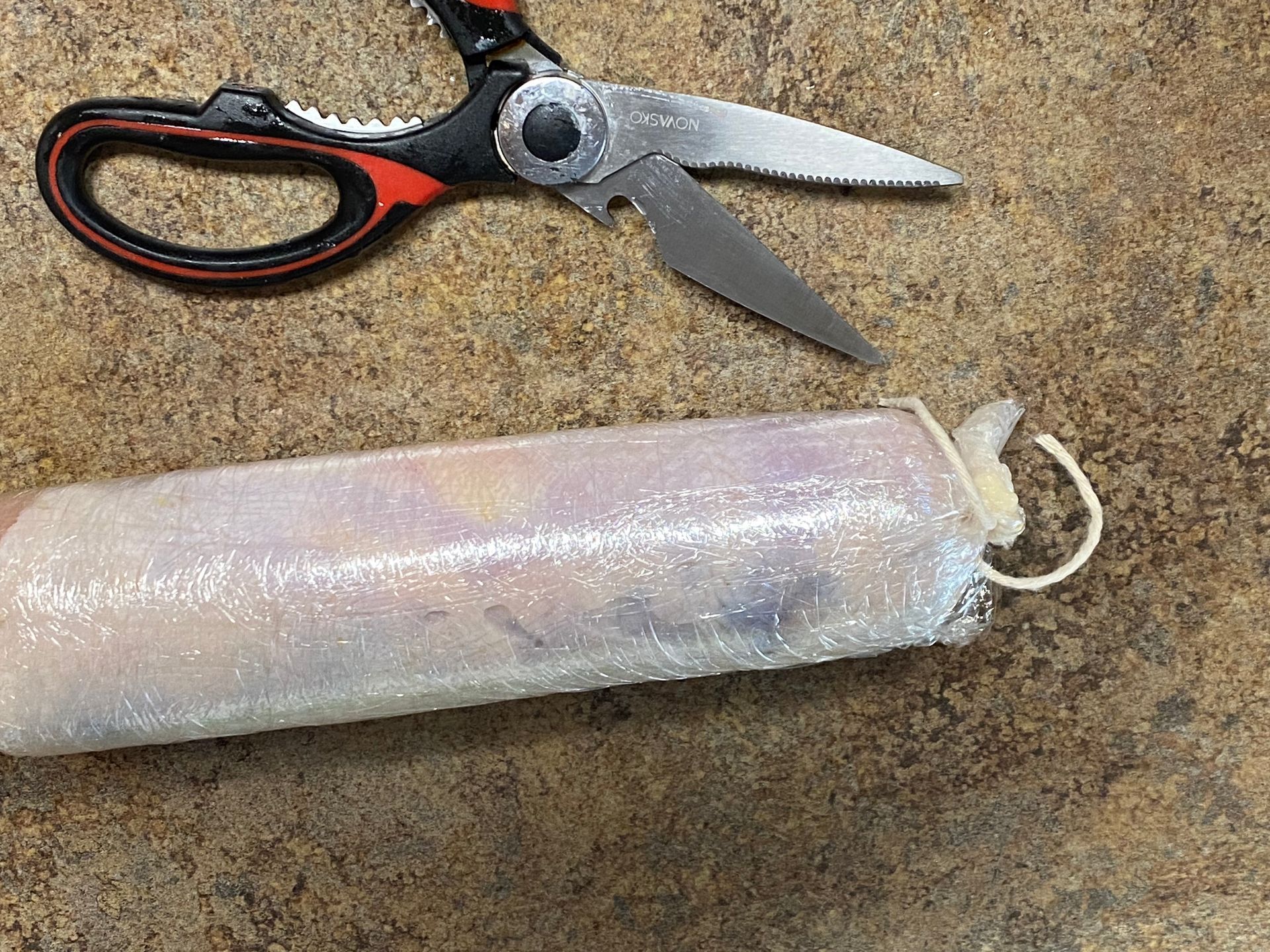
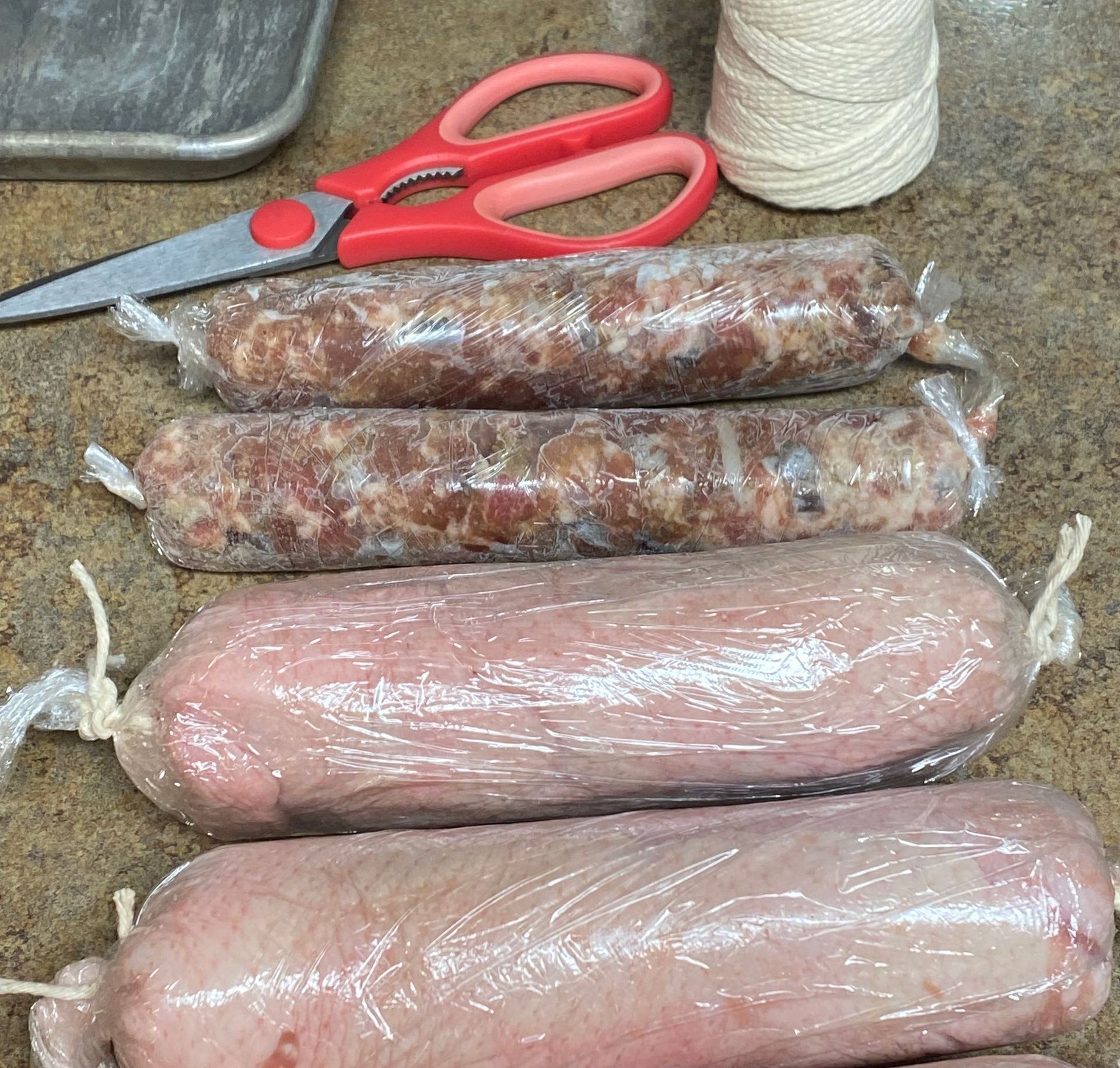
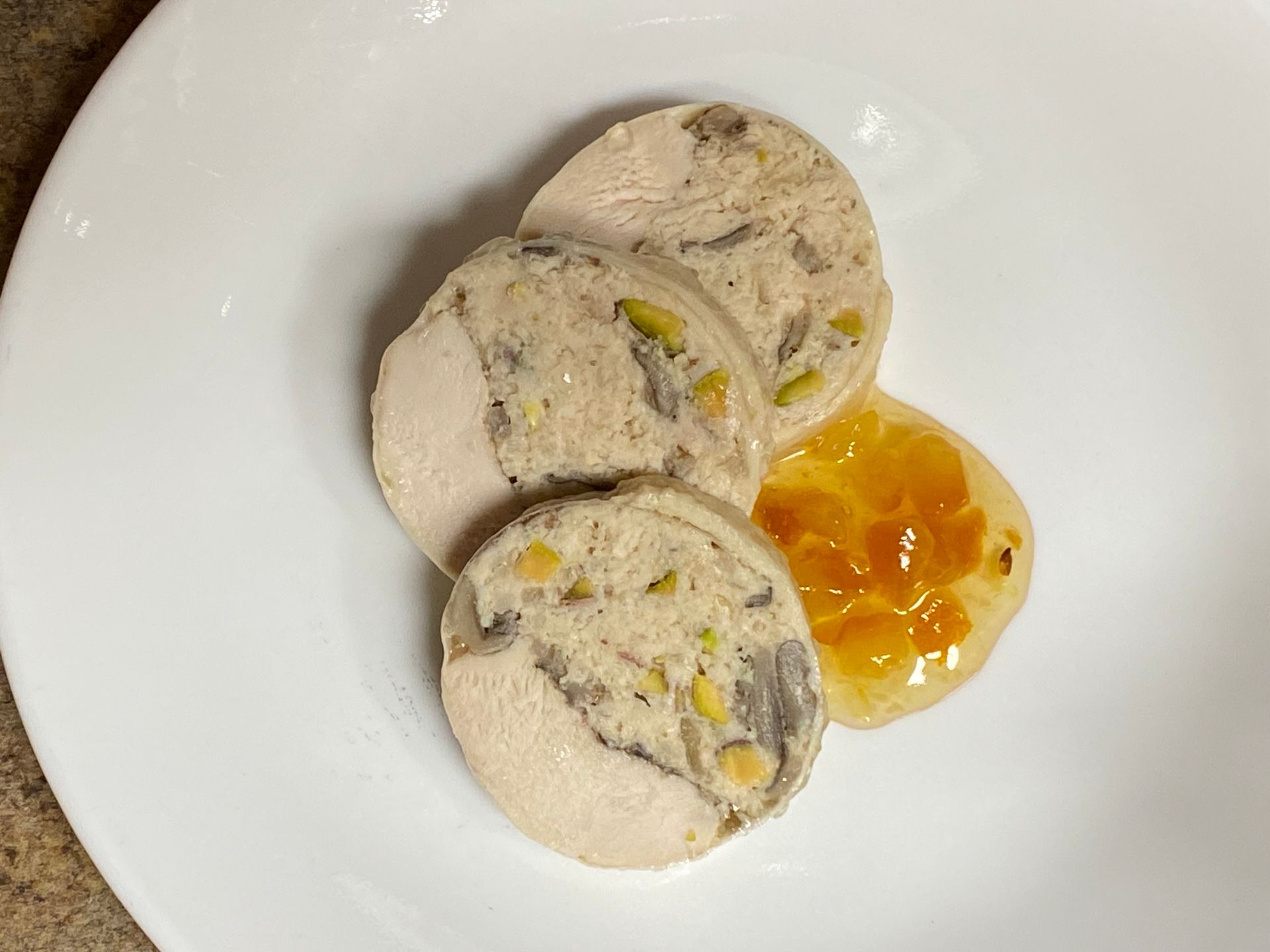
Step 3 Assembling the ballotine
To assemble, fill a disposable pastry bag with forcemeat and pipe out a large log (around 2 inches in diameter). Wrap and freeze for about an hour so it’s easier to assemble. During that time slice off as much of the fat from the slightly frozen skin as possible.
Place the skin on a sheet of plastic wrap.
Lay the marinated, flattened chicken breast onto the skin (on plastic wrap); then unwrap the forcemeat log piped earlier and lay that over the chicken breast; gently press down so the forcemeat wraps partially around the breast.
Wrap the skin around the forcemeat/chicken breast 'log' so there is at least an inch overlap.
Wrap tightly with plastic or cheesecloth to create a tightly wrapped galantine.
Poach in hot water on the stove top or in a water bath in the oven. If the final product is wrapped in cheesecloth, poach in very delicious chicken stock to a final temperature of 160° F and let carry over cook to 165°F; If you wrap in plastic, poach in water.
I prefer poaching in the oven with a rack beneath in a hotel pan at 250°F; covered with a wet towel.
Slice to serve.
